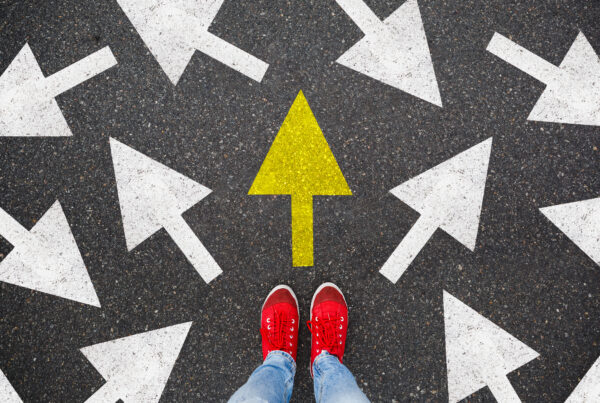
The University of California, Irvine (UCI) is a major research university in Southern California with 35,000+ students and a large fundraising operation dispersed between 23 campus units and a large healthcare operation. Before implementing Advancement RM with Affinaquest in early 2020, UCI was working with a legacy system that had been in place for more than 20 years.
To better understand how UCI stepped out of the past and into the future, the Affinaquest research and content team recently sat down with Ashish Regmi, Executive Director, Digital Transformation and Innovation for UCI Advancement. We talked about why UCI chose Advancement RM, some of the best problems they have since been able to solve, and how making the transition to a modern advancement system has set UCI up for future success.
The Problem of Patchwork Data
After two decades, UCI’s legacy CRM simply wasn’t meeting the needs of advancement, Ashish told our research team. In an effort to make the old system work, he and his team had constructed a complicated structure of integrations, applications, and “homegrown solutions” intended to make up for where the CRM fell short.
“[UCI’s legacy system] was not a focused CRM system. It was created in a different era,” Ashish told me. “So then we had a hodgepodge of different solutions that we were trying to use alongside it.”
To utilize their data, the UCI members of the advancement IT team frequently had to manually move data in and out of the central CRM and other applications built for various departments, including a separate donor database managed by the UCI Health System. In addition to straining the team’s resources, this disparate patchwork of technology and manual processes was inefficient and led to delays in updating data throughout the data landscape.
A Flexible, Cutting-edge, Extensible Solution for Better Integrations
Ashish was tasked with finding the right solution for UCI. One of the first decisions that the team had to make was whether to replace just the core legacy system or to overhaul the entire technological landscape for UCI Advancement. They chose the latter.
Moving UCI’s advancement technology structure forward meant finding a robust solution that would bring all the institution’s databases and applications together in one place. Ashish and his team’s ideal system was “open,” meaning that it was flexible, easily customizable, and endlessly extensible to keep up with both current and future needs. A new CRM also had to be user-friendly, ensuring that staff could easily adapt and integrate it into their workflow.
Ashish and members of his team had used Salesforce in the past, and they were aware of its potential as a customer relationship management (CRM) system. They soon also learned about Salesforce’s fundraising capabilities with Advancement RM from Affinaquest, which was a new and promising addition to the Salesforce ecosystem at the time.
“At the start, we were presented with a basic choice,” wrote Ashish for the UC IT blog. “Stick with long-established software vendors in the advancement arena and a relatively closed platform or take a calculated risk and move into the highly flexible and integration-friendly platform of Salesforce. We opted for [Salesforce with Advancement RM] to benefit from its flexibility in customizations, integrations, app exchange products, and a highly aggressive feature development schedule.”
UCI went live with the Advancement RM in early 2020, calling it “ZotForce” in reference to the school’s “ZOT! ZOT!” battle cry. That unusual cheer was, in turn, inspired by their anteater mascot and the “zot” sound made by an anteater in a long-running, popular comic strip.

Integrations, Extensions, and Beyond
While one of the goals of UCI’s database conversion project was to simplify the institution’s technological landscape, they, like many modern advancement shops, still rely on a number of specialized applications. The robust integration and extension capabilities of Advancement RM have allowed the UCI IT team to better manage the data across these applications and also build out custom functionality directly within ZotForce to align with the institution’s business practices.
Ashish shared a few of the institution’s most notable integrations and extensions.
Integrating Event Data
Prior to launching ZotForce, Ashish noted events were a pain point for both event and data managers within the UCI advancement team. To hold an event, the host would need to first request data from IT, load that data into the event system or communications platform of choice, then pull and send the data back to the IT team for addition back into the legacy CRM.
In ZotForce, the team streamlined event data sharing, automatically feeding data between EventBright and Aventri, the event applications that UCI uses to manage their events, and Advancement RM.
Updates are nearly instant; as soon as someone registers for an event online, that RSVP will be reflected in Advancement RM. Transaction data is seamlessly integrated as well, allowing for faster processing of fees and donations associated with these programs.
“We’re doing the same thing [as before], but the volume that we can handle now is substantially higher.” Ashish said.
The Grateful Patient Breakthrough
Another giant leap forward for UCI’s fundraising operation was integrating the grateful patient (former patients that are potential or current donors) fundraising data from the UCI Health system with Zotforce.
“Our grateful patient integration is probably one of the best in the country,” says Ashish.
The process to load data from UCI Health System into the advancement CRM used to take the better part of a week, as the IT team manually reviewed and cleaned the data before loading it in. In ZotForce, the same process only requires a few minutes, allowing it to happen far more often. MuleSoft, an integration software that works with Salesforce, was critical in helping to facilitate this integration.
Plus, grateful patient opportunities now reside in the same system as other campus donor opportunities, allowing for better transparency and collaboration across campus, and the advancement team has been able to better identify new prospects from the grateful patient data too.
Streamlining Gift Processing with Transaction Review
In an engaging presentation at the 2021 Affinaquest Virtual User Summit held on December 9, 2021, Ashish and his colleague Prasad Kothamasu, Director, Salesforce Architecture, discussed Transaction Review, an extension they developed in ZotForce. This functionality builds on the framework of the Advancement RM to improve the gift processing process, specifically as it relates to online transactions.
As gift and personal data come into UCI through online payment gateways, events, and other digital sources, the team wanted a better way to review the transactions, prepare them for batch processing.
In Transaction Review, a matching process runs to automatically pair new gift data to existing records. New accounts are created if none can be found. As needed, the gift data is reviewed by the gift processing team. Smaller gifts are processed automatically, and the batch is closed when any reviews are complete. This process has increased the efficiency, speed, and accuracy of gift processing, Ashish said in the presentation.
The IT team created an interface that improves bio-demo (biographical and demographic) updates made from this online data. The bio-demo team can see both new and old data on one screen, quickly comparing them and selecting the data to keep.

User Participation in the New Era
With any database conversion, getting users to adapt to new processes, policies, interfaces, and even lingo can be a challenge. For UCI, that challenge was magnified by unfortunate timing: the week of ZotForce’s launch, staff dispersed from campus to work from home in light of the emerging COVID-19 pandemic. In a video presentation for Salesforce, Ashish shared that the team was forced to switch to online training, building on an educational base that they’d begun in person before the system went live.
Those efforts clearly paid off; Ashish shared that close to 85% of users are logging into ZotForce every day, entering thousands of updates, transactions, and opportunities over the last two years.
“Overall, people really like the system,” Ashish told me. He said that the availability and visibility of data have been key elements driving use of ZotForce. Ashish and his team created custom homepages for every department at UCI, ensuring that relevant data is at each user’s fingertips the minute they log in. They also tweaked the page layouts provided by Advancement RM to suit specific needs.
May the ZotForce Be With You
From a patchwork system to a streamlined data infrastructure, UCI has come a long way in the last few years with Affinaquest’s Advancement RM and Salesforce. According to Ashish, UCI’s University Advancement and Alumni Relations division has improved its efficiency, strengthened its communications, increased the quality of services, improved processes, sped up information delivery, and enabled better coordination across units.
Even so, Ashish is clear in noting that ZotForce wasn’t just built for the present, but for the future.
“We created a platform where [UCI Advancement has] the capability to expand our fundraising and engagement to a very high level.”
Will Your CRM Lead You Into the Future?
More than 40 institutions are working toward the future with Advancement RM from Affinaquest. To learn more about this robust CRM platform and how it can move your advancement program forward, schedule a demo with our expert team today.




